Results 6,691 to 6,700 of 12096
Thread: Anandtech News
-
01-31-17, 09:13 PM #6691
Anandtech: AMD Announces Q4 2016 Earnings
This afternoon, AMD announced their fourth quarter earnings for the 2016 fiscal year. 2016 was a challenging year for AMD, as they continue to expand their business away from only focusing on the PC market, and although they still have a long way to go, 2016 was an improvement on 2015. For Q4 AMD had revenues of $1.11 billion, which is up 15% from Q4 2015. Gross margin for the quarter was $351 million, up from $283 million a year ago. As a percentage, AMD’s gross margin was 32%, compared to 30% in Q4 2015. AMD had an operating loss of $3 million for the quarter, compared to a loss of $49 million a year ago, while net loss improved as well, from $102 million in Q4 2015 to $51 million this quarter. This resulted in a loss per share of $0.06, compared to a loss of $0.13 last year. AMD makes note that Q4 2016 was a 14-week quarter, compared to a 13-week quarter for Q3 2016 and Q4 2015.
For the full fiscal year, AMD had revenues of $4.27 billion, which is up 7%, but a sixth amendment to their wafer supply agreement hit their margins very hard in 2016. For the full year, AMD had margins of just 23%, which is a drop of 4% compared to 2015. Operating loss was $372 million for the year, compared to $481 million in 2015, and net loss was $497 million, compared to $660 million a year ago. For the full year, AMD had a net per share loss of $0.60, which is an improvement from the $0.84 loss in 2015.AMD Q4 2016 Financial Results (GAAP) Q4'2016 Q3'2016 Q4'2015 Revenue $1106M $1307M $958M Gross Margin 32% 5% 30% Operating Income -$3M -$293M -$49M Net Income -$51M -$406M -$102M Earnings Per Share -$0.06 -$0.50 -$0.13
AMD also reports Non-GAAP results, which exclude stock-based compensation, restructuring charges, node transition costs, and wafer agreement charges, to give a look at their core business. On a Non-GAAP basis, AMD had revenues of $1.11 billion, just like their GAAP numbers, but they posted operating income of $26 million for the quarter, compared to an operating loss of $39 million a year ago. Net loss was $8 million, compared to $79 million in Q4 2015, and loss per share was $0.01 compared to $0.10 a year ago.
AMD attributes their increase in revenue primarily due to increased GPU sales. AMD’s Computing and Graphics segment had revenues for the quarter of $600 million, which is up 28% year-over-year. Polaris seems to be doing quite well, which is great to see. The segment still had an operating loss of $21 million, but that is a big improvement from the operating loss of $99 million a year ago. CPU average selling price fell year-over-year, but GPU average selling price increased year-over-year, thanks to higher desktop and professional graphics pricing. We eagerly await the launch of Ryzen, which AMD showed off last quarter, and expect to hear more about it this quarter.AMD Q4 2016 Financial Results (Non-GAAP) Q4'2016 Q3'2016 Q4'2015 Revenue $1106M $1307M $958M Gross Margin 32% 31% 30% Operating Income $26M $70M -$39M Net Income -$8M $27M -$79M Earnings Per Share -$0.01 $0.03 -$0.10
AMD branched into Enterprise, Embedded, and Semi-Custom designs and it has proven to be a strong source of revenue for them. With wins in both the Xbox One and PlayStation 4, AMD continues to be the beneficiary of both of those consoles outselling their predecessors. For Q4, this segment had revenue of $506 million, which is up 4% year-over-year, thanks to higher embedded and semi-custom SoC revenue. This segment does have it’s ups and downs annually with consoles peaking and ebbing, but annually it has been a strong market for AMD to branch into. This segment had an operating income of $47 million for the quarter, which is down from $59 million a year ago, which AMD attributes to higher R&D investments this quarter.AMD Q4 2016 Computing and Graphics Q4'2016 Q3'2016 Q4'2015 Revenue $600M $472M $470M Operating Income -$21M -$66M -$99M
Finally, All Other had an operating loss of $29 million, compared to $9 million a year ago. The increased loss is attributed to higher stock-based compensation charges for Q4 2016.AMD Q4 2016 Enterprise, Embedded, and Semi-Custom Q4'2016 Q3'2016 Q4'2015 Revenue $506M $835M $488M Operating Income $47M $136M $59M
AMD had strong margins for this quarter, and if they are going to have a strong 2017, that needs to be their focus. Ryzen may help as well, depending on how it compares, but Dr. Lisa Su, AMD’s president and CEO, has been slowly but surely bringing AMD back to a point of profitability. Looking ahead, AMD expects revenues to decrease 11% for next quarter, plus or minus 3%, which would put them at an 18% increase in revenue for Q1 2017 compared to Q1 2016, if you pick the mid-point in their target.
Source: AMD Investor Relations
More...
-
01-31-17, 09:13 PM #6692
Anandtech: Apple Announces Record Q1 2017 Results
Today Apple announced their earnings for the first quarter of their 2017 fiscal year. As is normally the case now that the iPhone has moved to a fall launch, Q1 tends to be their big quarter, and this one was the biggest yet for revenue, with Apple announcing $78.351 billion in revenue for the quarter. This is up 9% from a year ago. Gross margin was not as strong though, down $247 million despite the almost $2.5 billion more in revenue, but as a percentage it is still a strong 38.5%. Operating income was also down for the quarter, at $23.359 billion, compared to $24.171 billion a year ago. Net income was down 2.56% to $17.891 billion, but thanks to the share buyback program, Apple has less outstanding shares, meaning Apple set a record for earnings per diluted share of $3.36, despite the drop in net income. Apple has announced a dividend of $0.57 per share as well.
With the launch of the latest iPhone 7, there was certainly controversy over the loss of the headphone jack, but that did not stop people from buying it. Apple sold 78.29 million iPhones this quarter, up 5% from a year ago. This is a new record for iPhone sales in the quarter, up about 3.5 million units, which is a good sign for Apple after had several quarters in a row of slowed iPhone sales. We’ll see if they can keep it up for fiscal year 2017. As far as revenue, iPhone is still the juggernaut of Apple’s financials with $54.378 billion in revenue for the quarter. That is 69.4% of all of the revenue for Apple.Apple Q1 2017 Financial Results (GAAP) Q1'2017 Q4'2016 Q1'2016 Revenue (in Billions USD) $78.351 $46.852 $75.872 Gross Margin (in Billions USD) $30.176 $17.813 $30.423 Operating Income (in Billions USD) $23.359 $11.761 $24.171 Net Income (in Billions USD) $17.891 $9.014 $18.361 Margins 38.5% 38.0% 40.1% Earnings per Share (in USD) $3.36 $1.67 $3.28
iPad continues to struggle, at least compared to the rest of Apple, with sales dropping another 19% this quarter to 13.081 million, and despite the higher priced iPads in the lineup, revenue dropped even further to $5.533 billion, which is down 22%. That puts an average selling price of just $422 on the iPad, down from $439 a year ago, despite the addition of the 9.7-inch iPad Pro last year with it’s $100 higher asking price of $599. New iPad models haven’t really saved this segment from continuing to contract, but with the addition of the larger iPhone I suppose this makes some sense.
Mac sales for the quarter were up 1% only, despite the launch of the refreshed MacBook Pro models in October, but they were not shipping in volume until later in the quarter, so there may be some impact from that. Despite the sales only being up 1%, revenue was up 7% to a new record high of $7.244 billion this quarter, and the Mac has slowly worked itself back up to being the second largest source of revenue for Apple. But I don’t think that’s going to last for much longer.
Apple’s Services segment, which includes digital content from iTunes, app revenue, AppleCare, Apple Pay, and other services, is now the fastest growing segment of Apple, with revenues for the quarter of $7.172 billion, which is up 13% from last quarter and up 18% from last year. At this rate, it will overtake the Mac revenue next quarter, depending on how Mac sales go. This has been a very strong market for Apple over the last while, and I would think the addition of Apple Music must be helping as well.Apple Q1 2017 Device Sales (thousands) Q1'2017 Q4'2016 Q1'2016 Seq Change Year/Year Change iPhone 78,290 45,513 74,779 +72% +5% iPad 13,081 9,267 16,122 +41% -19% Mac 5,374 4,886 5,312 +1% +7%
Other Products include Apple TV, Apple Watch, Beats, and accessories, and although the segment overall is down 8% to $4.024 billion, Apple did announce they sold a record for Apple Watch revenue, although they’ve never announced numbers for that.
Apple is projecting revenue for next quarter of $51.5 to $53.5 billion, and margins between 38 and 39 percent.
Source: Apple Investor Relations
More...
-
02-01-17, 10:14 AM #6693
Anandtech: ASUS Launches 'Expedition' Line: GeForce GPUs and Motherboards 'Built for
ASUS has launched five new GPUs and a B150 motherboard that belong to its Expedition family of products. The Expedition video cards promise to wed durability for sustained long-time use with reasonable prices: the boards are made using ASUS’ latest automated production process and feature components with enhanced lifetime ratings over the standard components (albeit with standard cooling and near-reference frequencies). The increased suitability for non-stop use claim comes through the components and additional testing for the range: a combined 144hr compatibility test and burn-in sequence. ASUS plans to market these parts to business such as gaming cafes which remain popular in Asia.
Initially the ASUS Expedition lineup will consist of five graphics adapters based on NVIDIA’s GP104 and GP107 GPUs. The video cards are made using the ASUS Auto-Extreme automated production process that is also used to produce ASUS ROG Strix and some other high-end products. To build the boards, the manufacturer uses dual-ball bearing fans as well as 'higher-quality' chokes and other components that are said to be rated for extended durability. ASUS also states that the Expedition graphics cards are stress tested for 144 hours in various demanding environments to ensure their quality. The hardware maker does not elaborate whether all the cards are subject to rigorous testing, or just a number of cards per batch pass those tests, but it emphasizes that the adapters are ready for prolonged gaming sessions. Additionally, similar to its higher-end graphics boards, the Expedition video cards will feature ASUS’ zero-db fans that do not spin until the GPU reaches a certain temperature.
The higher performing card in the lineup is the ASUS Expedition GeForce GTX 1070 OC Edition 8 GB GDDR5 (EX-GTX1070-O8G) that uses the company’s own PCB design (24 cm/9.45” in length) and slightly taller cooling system (13.1 cm/5.16”) with two heat pipes and two fans. It is noteworthy that in default mode its GPU base frequency is 1582 MHz, lower than 1607 MHz recommended by NVIDIA, but the boost clock rate is 1771 MHz, which is higher compared to 1733 MHz on NVDIA’s reference designs. The card also has an OC mode with 1607/1797 MHz base/boost frequencies. As for display outputs, the card has one DVI, two HDMI ports, and two DisplayPort ports.
Gallery: ASUS Expedition GeForce GTX 1070 OC Edition 8 GB GDDR5 (EX-GTX1070-O8G)




The other two video cards in the Expedition family are the ASUS Expedition GeForce GTX 1050 OC Edition 2 GB (EX-GTX1050-O2G) and the ASUS Expedition GeForce GTX 1050 Ti OC Edition 4 GB (EX-GTX1050TI-O4G), also featuring a custom PCB design and dual-fan cooling systems (in this case, without heat-pipes). Both cards have slightly (~ 50 MHz) higher GPU frequencies than recommended by NVIDIA and thus offer a little bit of improved performance over reference designs. When it comes to the display outputs, these two adapters feature one DVI, one DisplayPort and one HDMI connector. These two cards are paired with non-OC versions (EX-GTX1050-2G and EX-GTX1050TI-4G ) to bring the total up to five.
Gallery: ASUS Expedition GeForce GTX 1050 OC Edition 2 GB (EX-GTX1050-O2G) and Expedition GeForce GTX 1050 Ti OC Edition 4 GB (EX-GTX1050TI-O4G)





On the motherboard side, ASUS has listed the EX-B150M-V5 D3 as an addition to the Expedition line. In a somewhat different take on the TUF line (which is aimed at high-end durability), this B150 board is along the similar lines of the GPUs: base hardware with a focus on durability when in a gaming cafe environment.
This board caters for most gaming cafe needs: two memory slots, space for a stock cooler, a single GPU slot, 2.1 audio, SATA ports, USB 3.0 ports, and if needed, an integrated graphics based DVI-D port. The Realtek ALC887 (the top 2.1 codec) gets some Crystal Sound 2 treatment via PCB separation and filter caps, and ASUS states that the USB ports are individually surge protected (in case one fails, the others will keep working). As part of the focus on gaming cafes, ASUS states that this board goes through extensive testing to ensure base compatibility with games and 100+ peripherals.
ASUS has not disclosed MSRPs of its Expedition graphics cards or their availability dates, but since the boards are already listed on the company’s website, we expect them to hit the market shortly. However, if they are truly focused on gaming cafes, they might only be launched in Asia. No word yet if these components come with increased warranties, either.
Related Reading:
- ASUS ROG XG Station 2 eGFX Enclosure with Thunderbolt 3 Launched
- GIGABYTE Quietly Launches Low Profile GeForce GTX 1050, 1050 Ti Graphics Cards
- ZOTAC Announces GeForce GTX 1080 for Mini-ITX PCs
- ZOTAC Launches GeForce GTX 1070 Mini for Mini-ITX PCs
More...
-
02-01-17, 11:35 AM #6694
Anandtech: The ADATA Ultimate SU800 SSD Review (128GB, 256GB, 512GB)
ADATA's Ultimate SU800 is their first SSD to use 3D NAND and the first 3D NAND SSD from a company that doesn't manufacture their own NAND flash memory. The SU800 pairs Micron's 3D TLC NAND with Silicon Motion's SM2258 controller to produce an entry-level consumer SATA SSD, available in both 2.5" and M.2 form factors.
More...
-
02-01-17, 12:33 PM #6695
Anandtech: GIGABYTE Extends Aorus to GPUs: A New GeForce GTX 1080
GIGABYTE this week announced its first graphics adapter that belongs to the Aorus line of products - the Aorus GeForce GTX 1080 xtreme edition 8G. The video card features a very high GPU frequency and will be among the fastest GeForce GTX 1080-based offerings from GIGABYTE and other hardware makers. The board will be the first graphics card to be sold under the Aorus brand, but soon other members of the same family will join it.
Over the past several years, GIGABYTE has introduced multiple sub-brands to address the market, from gaming on a budget to the most demanding PC enthusiasts. For graphics cards, the company used the G1 Gaming and the Xtreme Gaming sub-brands for its highest-end products. In the meantime the motherboard arm of the company (which almost acts like a different company internally anyway) was using UltraDurable, SOC Force, G1 Gaming and some other names. The fact that there was a split suggested a lack of synergy, especially when GIGABYTE's main competitors were unifying their product lines under a single gaming brand.
As a result, in order to make things simpler going forward, the company will consolidate its top-of-the-range offerings under just one brand, 'Aorus', which has been used for the company’s premiumWhat does Aorus logo stands for? - Aorus Forum laptops so far and was introduced to 200-series motherboards with the launch of Kaby Lake in January. From now on, GIGABYTE’s most advanced products, including notebooks, motherboards, and graphics cards will carry the Aorus brand.
To clarify 'why' Aorus: taken from an Aorus marketing rep forum post on 11/6/2016,
'the name AORUS stems from the Egyptian patron god Horus and was known for being a symbol of kingship in ancient Egypt. We picked Horus because we strive to be on top. We did replace the "H" with "A" to represent our philosophy of striving for grade A product and collectively as a company being the striving to better ourselves and be the "A-Team"The Aorus GeForce GTX 1080 xtreme edition 8G (GV-N1080AORUS X-8GD) in many resembles GIGABYTE’s previously announced GeForce GTX 1080 Xtreme Gaming 8G (GV-N1080XTREME-8GD). The new card has a nearly similar Windforce 3X cooling system with multiple heatpipes, two fans with special fins and RGB lighting, but a slightly altered backplate. This first Aorus video card also has exactly the same GPU frequencies as the previously announce card: 1784/1936 MHz base/boost in OC mode. The new GPU also has the same display output configuration (three DP, one HDMI, one DVI as well as one 'VR Link' - a HDMI on the back of the card). Based on the images, the PCBs of the cards are not exactly the same (at least based on the parts we can see on the images below the story), but they may be very similar. In any case, from an out-of-the-box performance point of view, the two cards would appear to perform almost exactly the same depending on firmware.
The fact that the Aorus card resembles the Xtreme Gaming board is not something completely unexpected: development of brand new products takes a long time and the company already has a flagship graphics product with an advanced cooling system and feature-set that satisfies the buyer. Going forward we would expect to see exclusive Aorus offerings, but for now the new cards will resemble existing products. Meanwhile, when it comes to motherboards, all advanced Intel 270 PCH-based offerings from GIGABYTE already carry the Aorus trademark. As soon as GPU companies come up with new processors, the Aorus family will get unique graphics cards as well.
GIGABYTE did not officially announce the recommended price of the Aorus GeForce GTX 1080 xtreme edition 8G, but since the card has similarities with other products we expect the new unit to cost about the same amount of money. Right now, Newegg offers GIGABYTE’s GeForce GTX 1080 Xtreme Gaming graphics cards for $680-$744. Both the Aorus and Xtreme Gaming graphics cards come with a four-year warranty in North America (with online registration required).Comparison of GIGABYTE's Aorus and
Xtreme Gaming GTX 1080 Graphics CardsAorus
GeForce GTX 1080
xtreme edition 8G GV-N1080AORUS X-8GDGIGABYTE
GeForce GTX 1080 Xtreme Gaming 8G GV-N1080XTREME-8GDNVIDIA
GeForce GTX 1080
Founders EditionStream Processors 2560 Texture Units 160 ROPs 64 Core Clock (MHz) 1759 - 1784 1607 Boost Clock (MHz) 1898 - 1936 1733 Memory Capacity 8 GB Type GDDR5X Clock 10 Gbps TDP 180 W Launch Date Q1 2017 Q3 2016 5/2016 Launch Price ? $680 - $744 $699
Gallery: Aorus GeForce GTX 1080 xtreme edition 8G





Related Reading:
- CES 2017: GIGABYTE "Aorus" Press Event Live Blog
- GIGABYTE Quietly Launches Low Profile GeForce GTX 1050, 1050 Ti Graphics Cards
- GIGABYTE Exhibits an Aquantia AQC107 based 10G Ethernet PCIe Card
- GIGABYTE's New Console: The 'Gaming GT' PC Launched with Core i7-K, GTX1080, TB3
More...
-
02-01-17, 02:09 PM #6696
Anandtech: The AOC Q2781PS Announced: 'Frameless' Rose Gold 27" QHD with Swarovski Cr
AOC this week introduced two new 27” displays with thin bezels, a fancy asymmetric stand, an IPS panel and QHD resolution (2560×1440). The more expensive of the two monitors comes with a rose gold base as well as a rear embedded with Swarovski crystals.
When it comes to stylish computer hardware in general and displays in particular, it is not always easy to get something that is both aesthetically attractive and technologically advanced. High-quality backlighting requires space, and full-size connectors make devices thicker too, so sleek designs usually have certain compromises. AOC attempted to combine style and technology in its Q2781-series monitors, if having crystals on your monitor is your thing. The displays are based on AH-IPS panels featuring a 2560×1440 resolution suitable up to 350 nits brightness, a 1000:1 contrast ratio, 178°/178° viewing angles, a 5 ms response time and a 60 Hz refresh rate. The manufacturer claims that the Q2718PQ and the Q2718PS displays can reproduce 16.77 million colors, and also claims “full sRGB” (but we would cautiously call it 99%).
The monitors have very thin bezels on all four sides and have asymmetric L-shaped stands as shown in the picture above. The AOC Q2781PQ has a silver stand and a regular black back panel. The AOC Q2781PS comes with a rose gold base, whereas its back panel is decorated with Swarovski crystals. The tilt of both displays can be adjusted, but the height is fixed.
Gallery: AOC Q2718PQ DisplayAOC Q2781-Series Displays Q2781PQ Q2781PS Panel 27" IPS Native Resolution 2560 × 1440 Maximum Refresh Rate 60 Hz Response Time 5 ms (gray-to-gray) Brightness 350 cd/m² Contrast 1000:1 Viewing Angles 178°/178° horizontal/vertical Pixel Pitch 0.2331 × 0.2331 mm PPI 109 Inputs 1 × DisplayPort
2 × HDMI
1 × D-SubAudio 3.5-mm headphone jack Color Silver Rose gold Bling No Bling Bling Bling Power Consumption Standby < 0.5 W Maximum 45 W 





As for connectivity, the AOC Q2781-series displays have a DisplayPort, an HDMI header, a D-Sub input as well as a 3.5-mm headphone output. Keep in mind that D-Sub does not support HDCP and certain content may not playback when using such connectors. AOC mentioned that the Q2781-series monitors also feature the company’s Clear Vision video engine to upscale SD content to HD quality.
The AOC Q2781PQ is available now at Amazon.com for $349.99, which is below the MSRP of $499. The rose gold version with the Swarovski 'bling' (Ian's edit: each to their own) will be available in the coming months for $599.
Buy AOC Q2781PQ on Amazon.com
Related Reading:
- AOC P2779VC: 27” PLS Display with Qi Wireless Charging Base for $199
- AOC Announces the AGON AG352UCG 21:9 Curved Display: 35", 3440×1440, 100Hz with G-Sync
- Nixeus NX-VUE27P Pro WQHD (2560x1440) Monitor Launched
- BenQ PD2710QC Announced: 27" 2560x1440 with Integrated USB Type-C Dock
More...
-
02-02-17, 07:32 AM #6697
Anandtech: GALAX Launches Low Profile GeForce GTX 1050 OC and 1050 Ti OC
GALAX has joined the list of manufacturers to offer low-profile video cards based on NVIDIA’s GeForce GTX 1050-series GPUs. The boards resemble similar products from other makers and are designed to upgrade low z-height PCs or build affordable small form-factor HTPCs. As with the other 1050-series parts, these are
-
02-02-17, 11:08 AM #6698
Anandtech: Netgear Nighthawk M1: LTE Cat 16 Router up to 1 Gbps
Netgear this week announced the Nighthawk M1 mobile router, which is the industry’s first 4G LTE device with download speed up to 1 Gbps. The Nighthawk M1 is powered by Qualcomm’s X16 LTE modem with 4x4 MIMO announced a year ago and will be available only on Telstra’s 4GX LTE network in Australia. As soon as similar networks are launched in different parts of the world, the same router or its derivatives may hit the market elsewhere as well.
The Netgear Nighthawk M1 mobile router is aimed at those who need to set up ultra-fast mobile broadband connection for multiple people and up to 20 devices in areas where cable broadband is unavailable (there are a lot of rural areas in Australia where there is no broadband). The Nighthawk M1 can be used like a normal portable router (it has a GbE port as well as two USB headers) or as a NAS/media streamer (it has a microSD slot). The router also has an inbuilt battery (5040 mAh) which is rated for up to 24 hours of standard use. The Nighthawk M1 does not require any special setup, but it is equipped with a 2.4” display to monitor its performance/data usage and there is also a special app for Android and iOS that allows a user to manage the router (network settings, parental controls, etc.).
At the heart of the Netgear Nighthawk M1 there is Qualcomm’s Snapdragon X16 LTE modem (paired with Qualcomm’s WTR5975 RF transceiver). The modem supports 4x4 MIMO, four carrier aggregation (4xCA) and higher order modulation (256QAM) to download data at up to 1 Gbps (in select areas) as well as 64QAM and 2CA to upload data at up to 150 Mbps over Telstra’s 4GX LTE network (Telstra's network is only 3CA it is worth noting). We already know that the X16 modem will be integrated into Snapdragon 835 SoCs for smartphones, but right now it is available only as a standalone chip. The Nighthawk M1 router is also equipped with Qualcomm’s 2×2 802.11 b/g/n/ac Wi-Fi solution that can connect up to 20 devices simultaneously using 2.4 GHz and 5 GHz bands concurrently.
The Netgear Nighthawk M1 (MR1100) mobile router will be available from Telstra in Australia later this month for $360 AUD ($276 USD) standalone. Telstra also plans to offer the router with a range of broadband plans.Netgear Nighthawk M1 MR1100 SoC Qualcomm Snapdragon X16 LTE modem
MDM9x50Display 2.4" Network 4G: 4GX LTE CAT 16,
4-band CA, 4x4 MIMO
700/900/1800/2100/2600 MHz
3G: 850/900/1900/2100 MHzLTE Down: 1000 Mb/s
Up: 150 Mb/sDimensions 105.5 × 105.5 × 20.35 mm Weight 240 grams Battery 5040 mAh (removable) Connectivity 2×2 802.11 b/g/n/ac Wi-Fi for up to 20 devices External Ports Ethernet
USB-A
USB-C
2 × TS-9 connectors for external antennasStorage MicroSD card with media server/NAS capabilities SIM Size unknown Colors Grey Launch Country Australia Price $360 AUD ($276 USD)
Gallery: Netgear Nighthawk M1


Related Reading:
- Qualcomm Announces New X50 5G Modem, First Gigabit Class LTE Network and Router
- Netgear Launches 802.11ad-Enabled Nighthawk X10 (R9000) Wi-Fi Router
- Netgear Launches CM1000 DOCSIS 3.1 Cable Modem, New Switches at CES 2017
More...
-
02-03-17, 08:33 AM #6699
Anandtech: Micron 2017 Roadmap: 64-layer 3D NAND, GDDR6 Getting Closer, & CEO Retirin
At Micron's 2017 Analyst Conference yesterday in Scottsdale, Arizona, Micron executives provided updates on the status and future plans for all their major business units. While no new products were announced at this investor-focused event, their projections offer some insight about what's in store for the memory industry in 2017 and beyond. With both NAND flash and DRAM in short supply globally, Micron's projections of increasing production volume and decreasing cost per bit are welcome reassurance.
NAND Flash: 64-layer 3D NAND This Year, Additional Focus on Small Die Products
In 2016, Micron and Intel's joint venture became the second manufacturer to sell 3D NAND flash in volume. That 32-layer first generation 3D NAND has reached mature yields that are comparable to that of planar NAND processes, and since last fall 3D NAND has accounted for a growing majority of Micron's NAND output on a per-bit basis.
In 2017 Micron will be ramping up production of their 64-layer second generation 3D NAND, which is currently sampling. They promise "meaningful output" by the end of their fiscal year (December 2017). The 64-layer 3D NAND will increase the total GB per wafer by more than 80% and decrease the cost per bit of TLC by at least 30%.
With the second generation 3D NAND, Micron is shifting their strategy slightly by offering at least two different die sizes. We've previously heard about the 512Gb 64-layer 3D TLC part, but Micron will also be making a smaller 256Gb 3D TLC part. This die is planned to be the smallest 256Gb NAND flash die available from any vendor, at 59 mm^2 or 4.3Gb/mm^2. The smaller die is intended for the mobile market where the 512Gb part will be physically too large. Micron's market share for NAND in the mobile market has been quite low, in part because they tend toward making large, high-capacity chips. The new smaller part will give them a chance to go after a much larger share of the rapidly expanding mobile storage market. The smaller part may also see some use in the SSD market for the smallest models in each family, to avoid the pitfalls of having too few dies to stripe data accesses across.
Micron is not ready to share many specifics of their third generation 3D NAND flash, but they plan to begin small scale manufacturing in the second half of 2017. They are estimating that GB/wafer will improve by more than 40%, suggesting that they'll be moving to about 96 layers. They have not yet projected what cost per GB savings can be expected with the third generation 3D NAND.
Four bit per cell (QLC) NAND flash is also something Micron has worked on, but they do not yet have speficic plans for introducing it as a product. They are watching the demand quite closely and plan to be ready to introduce QLC NAND for certain cloud computing uses once the market is ready. (The very low write endurance of QLC NAND makes it necessary for software to be modified to minimize unnecessary writes, and QLC drives will generally not be suitable as drop-in replacement of 3D TLC NAND.)
DRAM: Sub-20nm This Year, GDDR6 Getting Closer
Last year, Micron ramped up production of their 20nm DRAM, and by the third quarter 20nm was a majority of Micron's DRAM output. In 2017, Micron will be ramping up and begin transitioning to their "1x nm" (16nm) node for DRAM, improving cost per GB by at least 20%. They plan to introduce 16nm GDDR5 later this year. Development is underway for both their 1Y nm and 1Z nm DRAM nodes, with initial manufacturing of 1Y nm DRAM expected to begin in the second half of 2017. Overall, they estimate the 1Y nm node is about a year behind the 1X nm node. GDDR5X volume is expected to grow significantly to satisfy bandwidth-hungry uses involving GPUs and networking, and around the end of this year or early next year Micron plans to introduce GDDR6 memory.
Other Memory Technologies: Still Quiet on 3D XPoint
As usual, relatively little was said about 3D XPoint. Micron considers the memory to be "commercially ready" technology, with work underway on second and third generation 3D XPoint chips. The new generations will bring significant performance and density increases, but there are no numbers to back up those statements yet.
No specific products have been announced under their QuantX brand for 3D XPoint, but Micron plans to have some early market adoption of 3D XPoint by the end of the year. Even once 3D XPoint-based NVDIMMs are available, Micron is not concerned that 3D XPoint will significantly cannibalize their DRAM or NAND business.
Separate from 3D XPoint, Micron is working on at least one other new memory technology, as an in-house project instead of a collaboration with Intel. This new technology has not been named by Micron, but it will apparently allow for DRAM-like performance, which would be significantly higher than what 3D XPoint can deliver. This unspecified technology also has a clear potential for cost scaling, perhaps through increasing layering. The target it to be a bit slower and cheaper than DRAM, taking into account where DRAM technology is expected to be by the time this new memory comes to market. This is not at all an imminent revolution, and it could be a decade before it is mass produced and getting used in mainstream situations.
Trends: NAND Market Grows, EUV Slips Again
As for long-term trends, Micron sees the memory market as a whole becoming less volatile as DRAM's boom and bust cycles get less severe and NAND flash with its steadier growth accounts for an ever increasing share of the memory market. Weathering periods of oversupply and their associated price crashes is trying for memory manufacturers, and usually requires significant cuts to capital expenditures, which can delay the introduction of new technologies.
In spite of current shortages, Micron expects healthy growth in volume and decrease in cost per bit for both DRAM and NAND over the next few years. NAND flash sales are expected to grow faster than DRAM, so while DRAM is currently a larger part of Micron's business than NAND flash, that may change in a few years. Micron expects the memory market as a whole to grow at about 2.5 times the growth rate of the rest of the semiconductor industry.
In general, Micron is not looking to become significantly more vertically integrated. In particular, they do not want to become a competitor to their valuable DRAM customers. However, Micron is pursuing innovations in packaging, and they want to significantly expand their market share for what they call heterogeneous multi-chip packaging (xMCP): putting DRAM, NAND and logic in one package, such as for mobile devices or BGA SSDs.
Meanwhile it will surprise absolutely nobody to hear that Micron's deployment of extreme ultraviolet (EUV) lithography has experienced a setback. Last spring Micron reported that they planned to have their first EUV tool installed in their research fab by the end of the year. The equipment is in place but not online yet, so Micron does not yet have any preliminary results to report. Micron says nothing on their current roadmaps requires EUV, so at this point it is just a potential for cheaper or more efficient manufacturing, not a looming roadblock.
Finally, after three decades with Micron and having spent the past five years as its CEO, Mark Durcan has announced his intention to retire as soon as the board of directors can hire a successor. Durcan had previously announced plans to retire in 2012 while serving as the company's president, but the death of then-CEO Steve Appleton prompted Durcan to postpone his retirement indefinitely to serve as Micron's CEO. A new CEO could be found in a matter of weeks or the search may take months; either way, Durcan plans to stick around to ensure a smooth transition.
More...
-
02-03-17, 08:33 AM #6700
Anandtech: The Intel Core i3-7350K (60W) Review: Almost a Core i7-2600K
For some intrepid enthusiasts, this is the chip from Intel we’ve been waiting for. I foolishly predicted that Intel would never create an overclockable Core i3, because it had the potential to drive sales away from high-margin products. But here we are, Core i3-7350K in hand, and the ability to drive almost 5.0 GHz without too much trouble. This raises a couple of questions: just how close is it to the cheapest Core i5-7400 out of the box, which is only a few dollars more, and how close is it to the Core i7-2600K, a favorite chip among enthusiasts who have not yet upgraded. Read on to find out more.
More...
Thread Information
Users Browsing this Thread
There are currently 5 users browsing this thread. (0 members and 5 guests)






 Quote
Quote

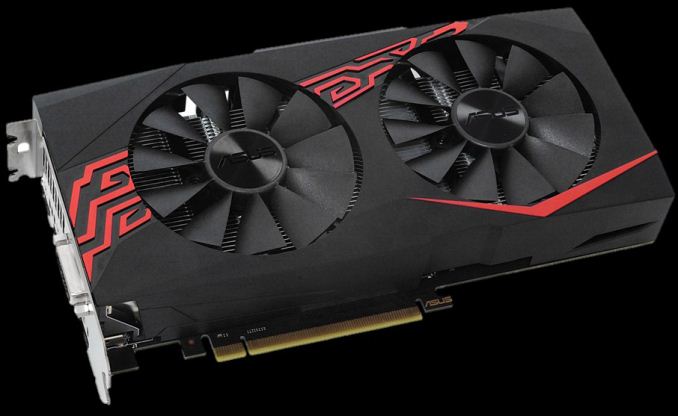

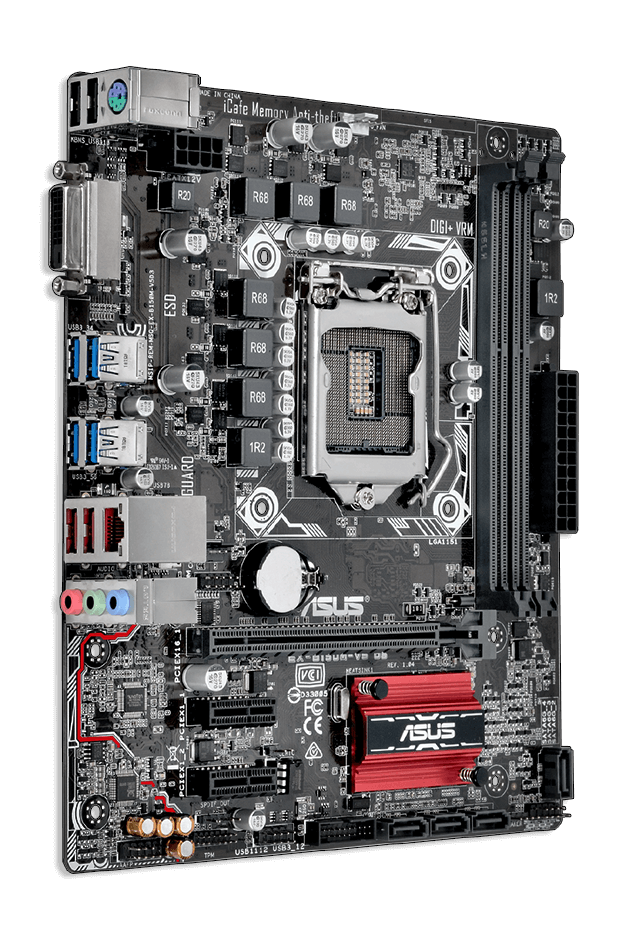
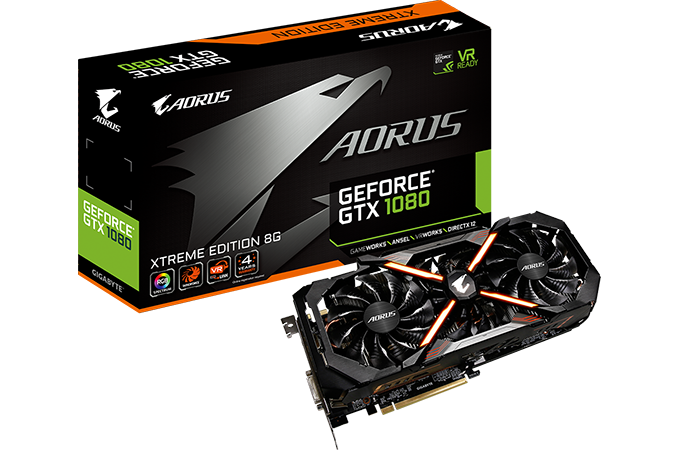



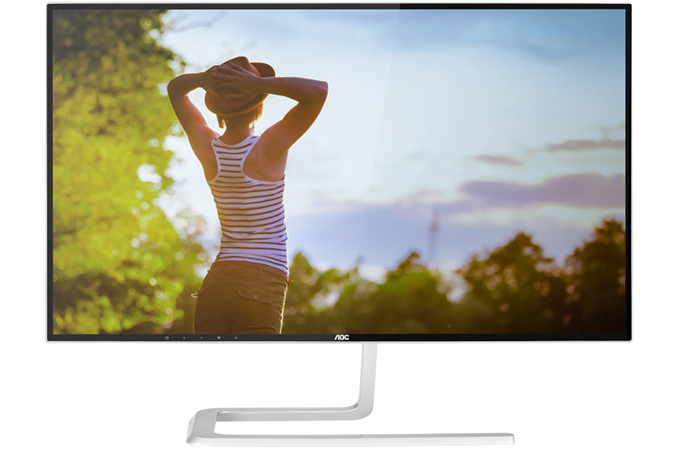

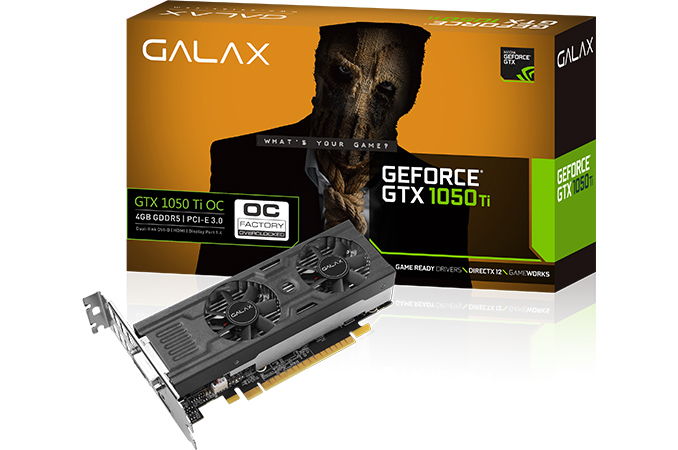
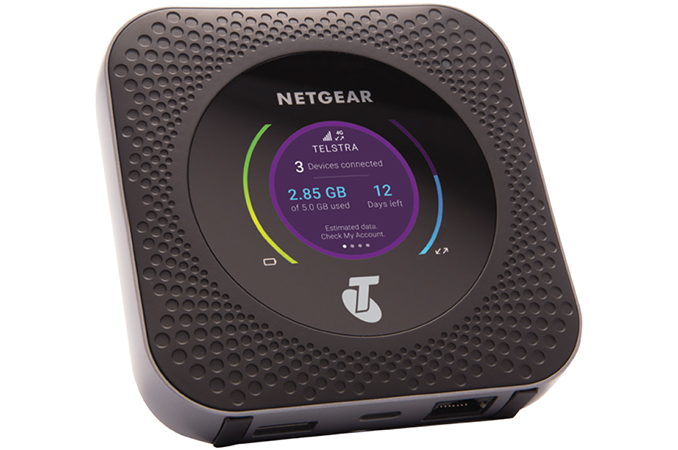
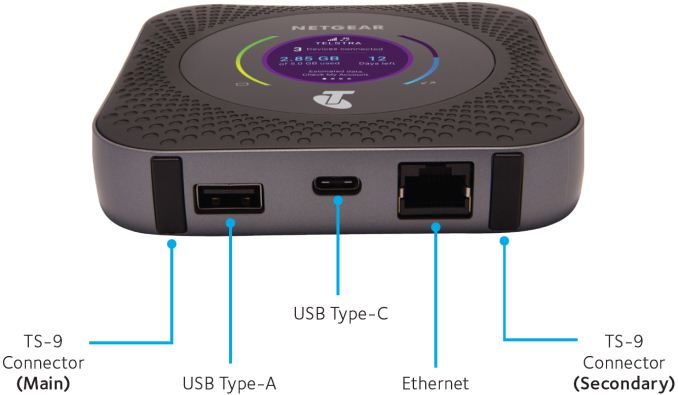
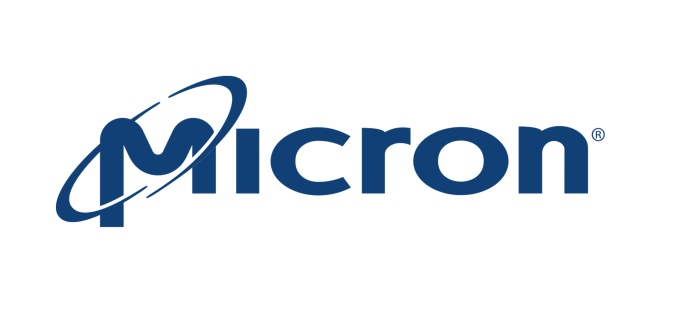

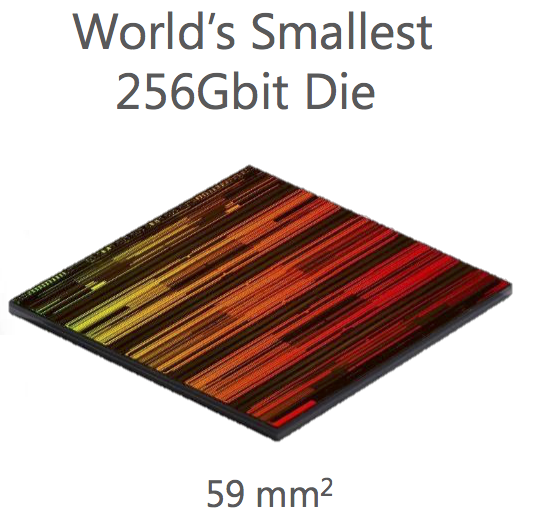
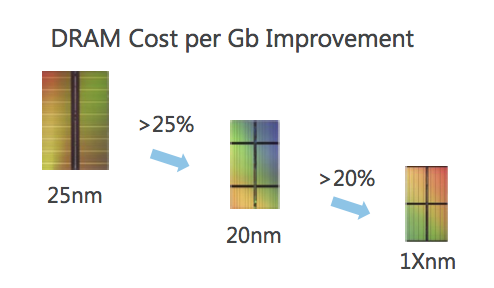
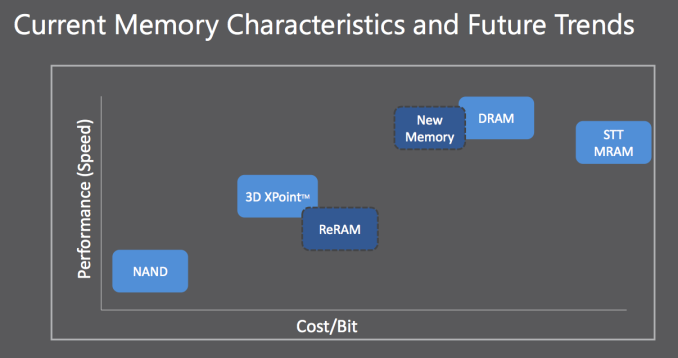
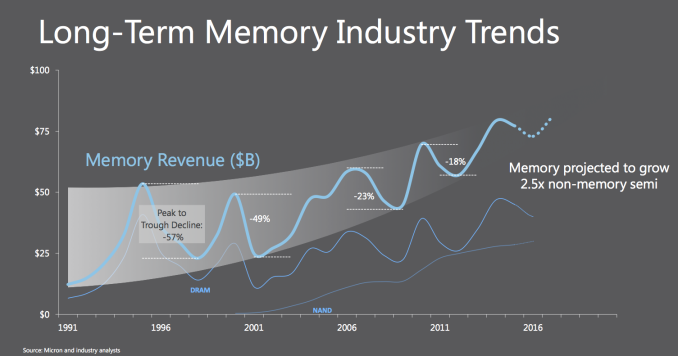
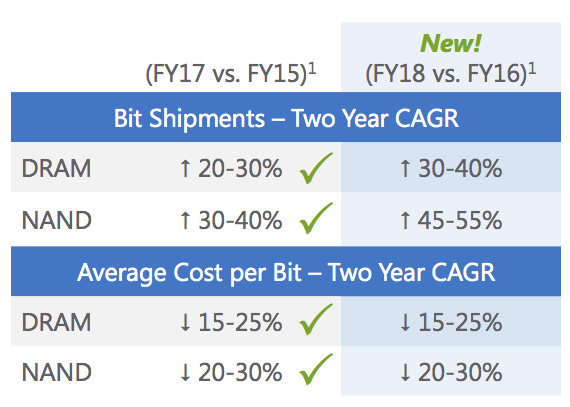

















Bookmarks